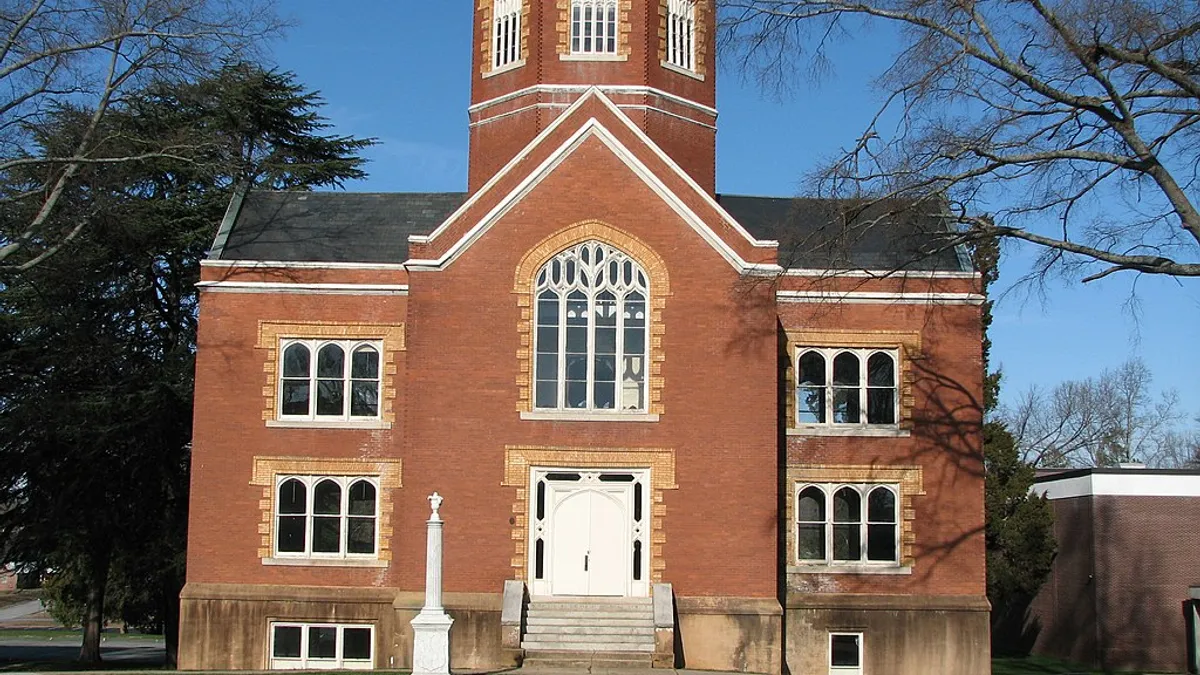A couple of years ago, the Common Application began wading into a relatively novel higher ed concept known as direct admissions.
Under the model, institutions automatically admit students without them needing to apply. Various colleges and higher ed systems, sometimes with the help of tech companies, are trying it out.
In part, direct admissions intends to bring clarity to an often cumbersome process, as well as introduce students to institutions they might not have otherwise discovered. These ventures can also target students historically underrepresented in higher education, who can especially be befuddled by mass amounts of paperwork and disparate admissions policies.
On Tuesday, the Common App — the online portal that allows students to apply to more than 1,000 of its member colleges — released the findings from the third round of its direct admissions experiment, in which 13 institutions proactively offered seats to 33,000 students. Colleges that participated include George Mason University and Virginia Commonwealth University.
Institutional and Common App representatives said the results revealed Tuesday were heartening, finding that students with direct admissions offers were two times more likely to apply to one of those colleges than those without one.
An important caveat, though, is that direct admissions is not a silver bullet for college access problems. As researchers have noted, a surprise seat at an institution is not a substitute for financial aid.
What did the Common App find?
The Common App has offered direct admissions since 2021. Its latest initiative, which it started for the 2022-23 academic year, focused exclusively on marginalized student groups, including Black, first-generation and low-income applicants who might have been lost in the admissions ether.
Of the 33,000 direct admissions students, 1,893 applied, amounting to less than 6% of the pool. The number of students who enrolled were not yet available.
The model resulted in a more than 4% increase in the share of underrepresented minority applicants who applied and a more than 3% increase in students from low-income neighborhoods.
Common App CEO Jenny Rickard acknowledged during a press briefing Tuesday that a direct admissions model is only one piece of increasing college access.
The Common App is homing in on students underrepresented in higher ed in the wake of June’s U.S. Supreme Court decision that ruled race-conscious admissions unconstitutional, Rickard said.
While most colleges accept a majority of their applicants, and thus do not factor race into admissions, the decision has set off other policy decisions, including some higher education institutions abandoning race-conscious scholarships, like the University of Missouri System.
Higher ed leaders have also expressed fears that the ruling will dissuade some students from seeking out college.
Rickard said that working with institutions on proactive financial aid offers and making college costs more transparent is “the next phase” but one that is still “ahead of us.”
More research on Common App
Researchers also unveiled a paper in tandem with the Common App that analyzed the results of its second direct admissions program. The company sent direct admissions letters to 18,000 students from six colleges. Of those, 830 students applied and 208 enrolled at one of the target institutions, according to Common App.
Those researchers — Jennifer Delaney, a higher ed professor at University of Illinois at Urbana-Champaign and Taylor Odle, an educational policy studies professor at the University of Wisconsin-Madison — found that the effects of a direct admissions model are “meaningfully smaller than those that additionally simplify the financial aid application process, incorporate a financial aid award, or provide sustained, higher-touch supports.”
The duo also published research last year about the first direct admissions program, created by the state of Idaho in 2015. While they found that direct admissions boosted first-time undergraduate enrollment between 4% and 8%, it had little to no influence on the enrollment patterns of students who are eligible for federal Pell Grants, a proxy to low- and moderate-income status.
The enrollment gains were mostly seen at two-year, open-access colleges.
The Common App has also only worked with nonselective institutions during its pilots. When it first dove into direct admissions in 2021, it partnered with three historically Black institutions.
About 3,300 students were automatically admitted to one of the three institutions in the applicants’ home states — though only 66 responded to the offer, and eight ultimately enrolled. At the time, Rickard attributed the results to the pilot starting late in the admissions cycle.





















